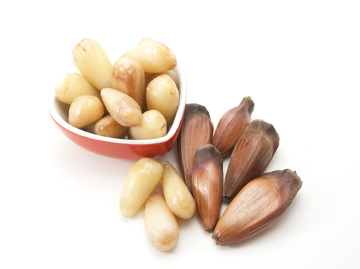THE araucaria (Araucaria angustifolia) is a tree species of gymnosperm belonging to the family Araucariaceae which is found in the Southeast (Minas Gerais, Rio de Janeiro and São Paulo) and South (Paraná, Rio Grande do Sul and Santa Catarina) regions of Brazil. It has other popular names, being also known as Paraná pine, curi, Brazilian pine and Paraná pine.
The Araucaria can reach a height of up to 50 meters and, when adult, has a cup that has a shape similar to a cup. Its trunk is straight and with branches only at the top. The needle-like leaves (acicles) are dark green in color and do not fall off during the winter. Also, this species holds cones, which are species of flowers of these plants. The female cone is called the pine cone, which is where the seeds develop.
This species lives for about 200 years, and seed production begins after the twentieth year in natural habitat. This tree native to Brazil was, for many years, the target of indiscriminate exploitation and, therefore, is today considered an endangered species. The plant can be used for a variety of purposes, including crafts and medicinal use.
The seed, also known as pinion, is a rich energy reserve, consisting mainly of starch, proteins and lipids. It is widely used in food, both for men and for some wild and domestic animals, such as pigs. In addition, it is traditionally used to combat heartburn and anemia. The leaves and bark are also used in folk medicine.

Pine nuts are an important nutritional source for several animals, including humans.
The wood of this plant has a yellowish color and the heartwood does not differ significantly from the sapwood. It is mainly used to manufacture boxes, laths, pencils, plywood, planks, matchsticks, piano soundboards, among others.
In addition to these uses, the araucaria can also be used in the production of paper, and the pine knots (a branch of a branch embedded in the trunk) serve as a substitute for mineral coal. The resin from this tree is also widely used in industry for providing tar, oils and other substances. Araucaria can also be used in reforestation and landscaping.
By Ma. Vanessa dos Santos

